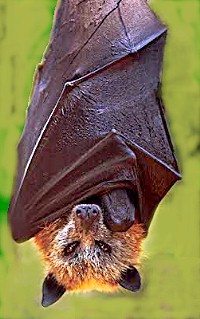North America has the Bigfoot or the Sasquatch. The Himalayas have the Yeti. The Russians have the Almas and the Aussies have the Yowie. Here in the Philippines, we have the Kapre, our own version of the hairy, oversized not-quite-human-not-quite-ape being that's been the object of countless expeditions and hoaxes to date.
The UP Cultural Dictionary and Wikipedia says that "Kapre" is derived from the Arabic word "Kaffir" meaning "non-believer of Islam." The term was allegedly used by the Moors to describe the dark-skinned non-Muslim Dravidians. See, the moorish dynasties of the middle ages used to rule large swaths of land from South Asia to Northern Africa and as far north as the Iberian Peninsula.
So how did the term get here, half a world away?
Fact is, Spain, which ruled our country for 333 years was itself under muslim rule for 781 years. The syncretism of languages and cultures was thus inevitable. As for the pejorative use of the term Kapre/Cafre/Kaffir, it is alleged that we owe this to the Spanish penchant for demonizing people they deem undesirable. It all boils down to outdated color/race politics that serves to affirm the concept that dark people are sinister and should thus be shunned. It was said that the term was used to prevent Filipinos from associating with African slaves and other dark skinned people, indigenous or otherwise. Sounds familiar? This was the same technique they used to anathemize the dark-skinned Atis as well as local shamans or babaylans of Panay or any other people who cling to their culture in defiance of the Iberian rulers.
The Kapre is usually portrayed perched on a huge tree, mostly old, gnarly Banyan (locally known as Balete) trees with a huge, lit cigar in hand. The Kapre is the most un-cryptid-like among the previous examples I've mentioned. Unlike the yeti et. al., There has been no photographic evidence of the creature or even footprints and hair samples to work with. Testimonials from rural folk abound but no "smoking gun" has been found as of yet. Personally, I believe the kapre, if it does exist, is not really a cryptid animal. From the way the subject is approached here, people seem to agree that a kapre seems more of an elemental (nature spirit) than an unknown animal. Thus, the concept of Kapre is more in the realm of the supernatural than cryptozoology.
Although considered relatively harmless, Kapres can inflict harm and sickness if it wants to. There has been stories going around about Kapres leading people astray, driving them away forn their home or taking fancy on women and abducting them. Curiously, it has been noted that most alleged Kapre sighting involved trees: huge, old trees, not-so-old trees or any tree that's about to be cut (who would want a tree stump for a home?).
Not all kapres puff cigars, however. On the summit of Dolores, Quezon's Mount Cristobal a.k.a. "Devil 's Mountain" stories abound about a huge anthropoid "guardian" of the forest called Tumao. Tumao was described by locals as a huge, dark, hairy man with piercing eyes. He was rumored to dwell near the camping spot at the summit of the mountain which had a huge, age-old tree nearby. A friend of mine who recently visited the mountain agreed that Tumao's tree was huge but the hairy man wasn't there when they paid a courtesy call.
Personally, I believe that the legend of Tumao and the demonizing of Cristobal might have some historical links. What's ironic is, the demonizing tag could have been used against the people who only wanted freedom to practice their own brand of Catholic faith which was frowned upon by the peninsular-centric government of the time (even full-blooded Spaniards born in the Philippines were discriminated against at the time). In the mid 19th century, Mt.Cristobal and the nearby Banahaw Volcano became the refuge of thousands of Filipinos who were condemned and persecuted as "heretics" by the Spanish government. The group was led by Apolinario Dela Cruz a.k.a. "Hermano Pule" who wanted to be a priest and was refused by the Religious Orders in Manila for being an "indio" or a native. Hermano Pule set up his own religious group called the Cofradia de San Jose but the crackdown was swift and brutal. After initial victories, Hermano Pule's people were overwhelmed and slaughtered en masse although a few thousand managed to escape. The religious rebels who escaped and hid in the mountains were called all sorts of names like "remontados" or "ladrones" (mountain people, bandits). In a way, demonizing the mountain and the people who dwell there was sanctioned by the colonial government and they were partly successful in making the perception stick (in Mount Cristobal at least).
This goes to show that branding people who go against the status quo was a state policy during the Spanish era. Anyone who doesn't conform will be treated as an enemy or worse, avoided and ignored. It is fairly safe to assume thus that the collective memory of these people and events has evolved over time to account for some of the Philippines' local legends and myths as we know them.
Still, first-hand stories about these supernatural beings persist. Some of these stories can be explained in purely rational terms but some simply can be quite convincing to some extent. Since these things are "supernatural," their existence can run the whole gamut of possibilities from pure "mystical imaginings" to actual experiences that cannot be quantified or described by any existing scientific process. When something is branded outright as "Supernatural," the cryptozoological buck stops there and science (or pseudoscience if you may) can't go any further.
I'll relate some of those stories on a later post:)





